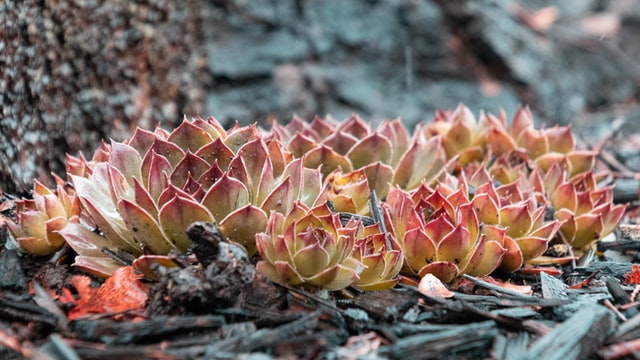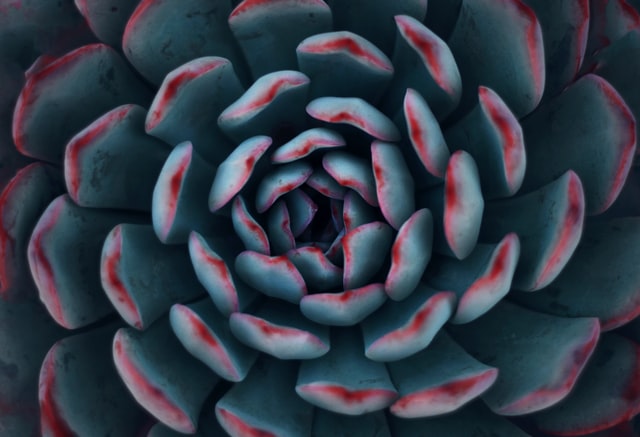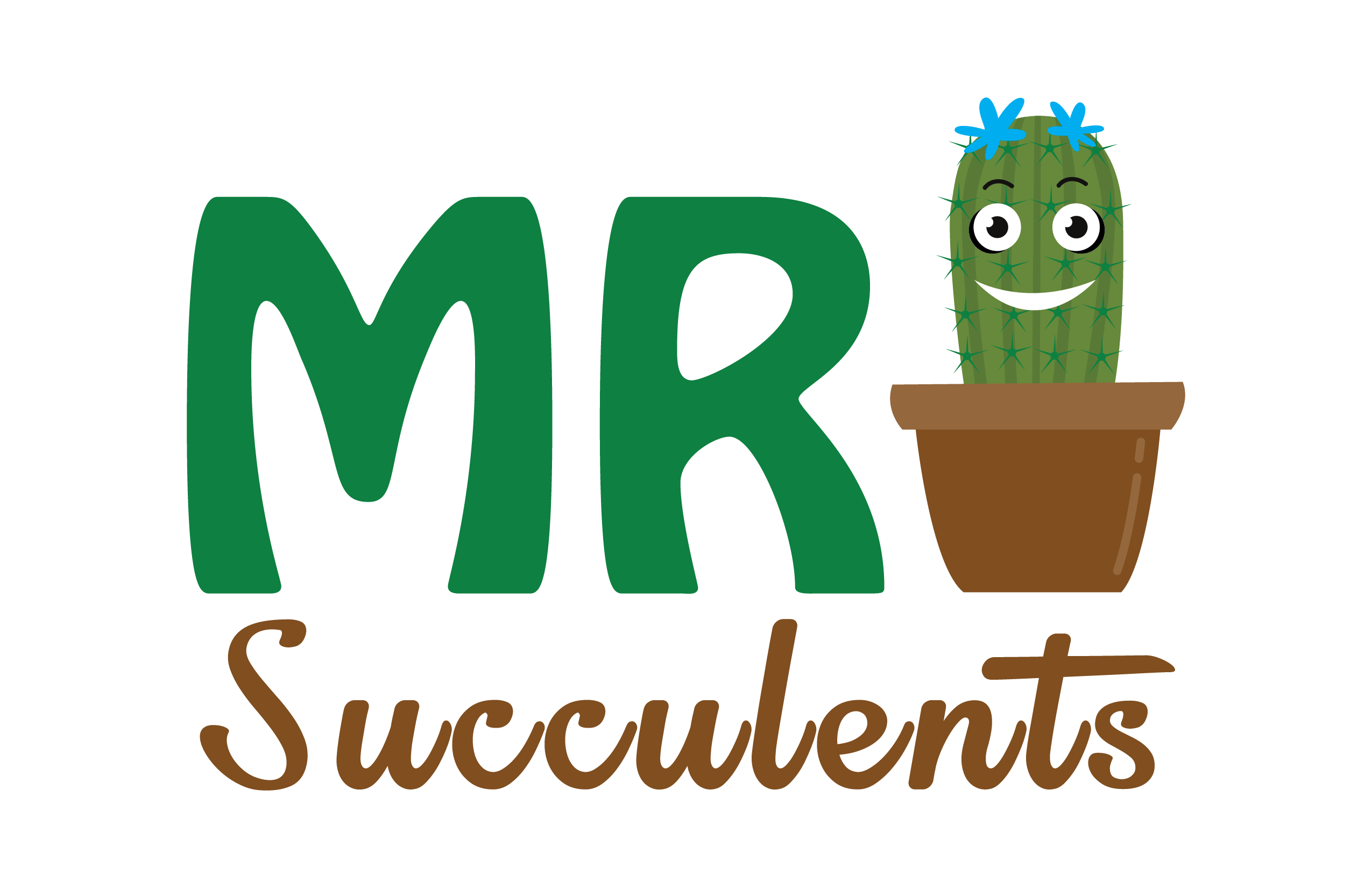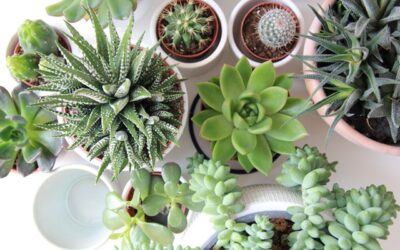Succulents come in all sorts of shapes and sizes. They are native to hot, dry climates and are typically found in deserts. Some common varieties include aloe, cactus, and jade plants. While they are often grown as houseplants, succulents can also be used in landscaping. Variegated succulents are those that have two or more colors in their leaves. These plants are usually more difficult to care for than other succulents, but they can add a unique and beautiful touch to your home. But how do you make your succulent variegated?

How do you induce variegation in succulents?
The most common way to induce variegation in plants is to expose them to cold temperatures. This can be done by putting them in a cool room or placing them in a refrigerator for a period of time.
By subjecting the plants to these colder temperatures, the variegation process will be induced and the plants will develop the desired markings.
The variegation is caused by exposing plants to colder temperatures. Variegation is a process in which plants develop patterns called markings, which come in many different forms. These markings generally occur due to meristematic cells, which are cells of rapidly dividing cells, develop.
Meristematic cells produce specialized cells, which extend their processes, and some cells stop dividing. Meristematic cells usually become visible as dark, circular markings.
Succulents are an excellent choice for beginners because they are relatively easy to grow and are not too picky about soil, light, or temperature. However, even the most diligent succulent planter may struggle with variegation, the phenomenon in which certain plants “bleed” their colors into neighboring leaves.
What is the best way to encourage succulent variegation?
The images of variegated plants are so incredibly beautiful, it’s no wonder people want to grow them. Unfortunately, variegation is often at odds with the needs of succulents. Some variegated plants are more tolerant of variegation than others. What’s the best way to encourage variegation in succulents?
When it comes to succulents, the best way to encourage variegation is by growing them in pots. Succulents grow best in pots, since they absorb moisture from the soil. If succulents are grown in soil, they may sustain damage if the soil is overly moist. When succulents grow in pots, they dry out quicker. So it’s a balancing act to keep the soil damp, but not too much!

How to Make Your Succulent Variegated
This succulent variegation is better known as “ghost plant,” and it’s one of the most dramatic plants you can grow. It thrives in low light and needs very little water.
Succulents are easy to grow and can survive dry, hot weather. All you need is a sunny spot, good drainage, and well-drained soil. The best time to plant succulents is during the spring, when the soil is still cool from winter.
There are several different types of succulents, but the variegated types are the easiest to grow. Simply take care of them like any other houseplant, fertilizing every few weeks with a low-nitrogen plant food. It’s best to use a fertilizer that’s specifically made for succulents since they have very little need for nitrogen.
The Benefits of Variegated Plants
Variegated plants are beautiful, fun, and, most importantly, easy to grow. Unlike typical plants, which produce only one color—green—variegated plants produce many colors, most commonly red, white, and pink.
Variegated leaves are often marked with a strip or array of colored veins, which appear only on the underside of the leaves. Variegated plant varieties come in all shapes, sizes, and colors, and are super easy to grow. It doesn’t matter if you have a green thumb or not, because these plants can be grown indoors or outdoors.
Variegated plants are unique. They attract attention. They add color. They’re easy to care for. They come in many varieties.
1. Variegated plants add color to a yard
Planting flowers, vegetables, shrubs and trees can add beauty to your yard. But the best plants for your yard are those that have variegated foliage. Variegated plants have dark green foliage, but on selected leaves and branches are stripes or checks of color. In addition to adding color to your yard, variegated plants also add texture.
2. Variegated plants add interest to a home
Variegated plants add interest to a home because they offer visual interest, provide color and texture, and come in a variety of species and tones. Variegated plants come in many shapes, sizes and colors, ranging from bright, yellows, oranges and greens, to soft, pinks and purples. Variegated plants not only add interest to a garden, but they can also boost your mood.
3. Variegated plants add beauty to your home
Variegated plants add beauty to your home. Variegated plants have leaves that come in bright colors or stripes. They add beauty to your home because they look like beautiful works of art. These plants come in many colors, including pink, yellow, purple, blue, green, red, and white. Some variegated plants have long stems, while others are short.
4. Variegated plants add design to any yard or garden
Variegated plants, also called variegated foliage, add interest to any garden or yard, and even your home. These plants have a colorful foliage that has many colors, shapes, and patterns.
Variegated plants come in many varieties, including:
- those with leaves that have different colors on them
- those with leaves that have different patterns on them
- those with leaves that have different textures on them
- those with leaves that have different shapes on them

How do I care for variegated succulents?
Variegated succulents are three of the cutest plants to own, and although they may seem delicate, they are actually quite resilient. In fact, these plants require very little water to thrive, as they can grow very well in arid climates. To keep your variegated succulents looking great, follow these care tips:
1. Keep Your Succulents in Full Sun
Variegated succulents typically like to be in full sun, so position them where they will get at least six to eight hours of natural light a day. If they don’t get enough light, they will start to stretch and become leggy.
2. Use Fertilization
It is normal for variegated succulents to produce spores, which will be present on the plant’s leaves.
If you notice any grayish or brown spots on the foliage, it is time for fertilizer. Fertilize according to the package directions, and be sure to water the plant thoroughly after applying the fertilizer.
3. Remove Fallen Leaves
The leaves of some variegated succulents can drop onto the soil below the plant, which can make it harder for nutrients to reach the roots.
Be sure to remove fallen leaves from your succulents, as this will help them stay healthy. Additionally, you may want to consider trimming any dead leaves or stems from your succulents. This will help them look their best and encourage new growth.
Can variegated plants return to normal?
Variegated plants are all the rage, and for good reason. Variegated plants come in dazzling color combinations, they make excellent container plants, and they brighten up any garden.
While variegated plants are fun, most characteristics attributed to variegated plants—like their irregular leaves—are actually caused by other plant characteristics. Learn what causes those leaves turning back to normal.
Variegated plants return to normal within 2-3 weeks. Some plants begin to return to their regular shape within 1 week. Variegated plants grow back slowly as they lose their variegated coloration.
The more that the plant is grown, the slower it will grow. Once the plant has lost all its variegated coloration, it will slowly return to normal growth.
1. Variegated leaves return to normal in cool temperatures
As temperatures drop, the chlorophyll in plants begins to become less active. As chlorophyll levels fall, so too does the ability of plants to absorb sunlight effectively. This loss of function makes plants less green and dull in appearance.
Normally, as temperatures rise, plants will accumulate more chlorophyll and absorb more sunlight, which leads to their chlorophyll levels rising and their ability to grow and thrive increasing. However, with cold temperatures, this process of photosynthesis stops, and plants loose their fresh green appearance.
Eventually, the leaves become completely brown and withered. At this point, leaves will return to normal in cool temperatures.
2. Its true growth pattern quickens in high temperatures
High temperatures lead to succulent growth patterns. Succulent plants, in general, grow well under high temperatures. These are the plants that grow in the deserts, and you can see that they grow very well in temperatures that are usually above 100 degrees Fahrenheit. As temperatures rise, succulents grow faster.
3. Variegated leaves return to normal in shade
Variegated leaves return to normal in shade. Variegated leaves have normal appearing color in summer but turn brown or yellow when placed in direct sunlight. When the leaves are placed in shade they will return to normal green.
The chlorophyll in leaves breaks down in bright light and the leaves turn brown or yellow. This is why the leaves appear normal in shade but turn brown or yellow in direct sunlight.
4. Variegated leaves return to normal in sun
Variegated leaves often display stunning colors and even patterns, such as rainbows. However, as with many other plant parts, variegated leaves often follow a clear developmental pattern.
For instance, green grass on mountain tops can turn yellow as the season progresses, and patterned leaves on trees can turn brown as autumn approaches.
Conclusion
In summary, variegated succulents are very unpredictable in their leaf color, but each year it seems to get a little better. Flower color can vary from pale pink to bright white. As long as you’re willing to experiment, you can (and should) enjoy variegated succulents!


0 Comments